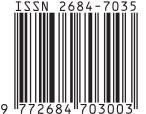PENGETAHUAN MASYARAKAT TENTANG BAHAN PENGAWET MAKANAN DAN MINUMAN DENGAN POLA KONSUMSI MAKANAN DAN MNUMAN DI WILAYAH KERJA KECAMATAN SUMBERSARI
Abstract
Knowledge represent the very important domain to forming of somebody action ( over behavior) because in behavioral research and experience in the reality constituted by knowledge will be more be good than behavior which is not constituted by knowledge. For example in pattern consume the food and beverage oftentimes disregard the existing content in food and beverage of is inclusive of preservative content, which brief during and or old relative will affect to health. Research in region of subdistrict sumbersari of 5 - 8 August 2007 with the amount of population and sampel 105 responden by simple random sampling. type of Research korelasional with the approach crosssectional. Test the statistic use the spearman rank test by derajad α= 0,05 which its meaning if P value < 0,05 meaning hypotesa accepted there is relation between knowledge about preservative food and beverage with the pattern consume the food and beverage or on the contrary. Result of research show the p value 0.06 meaning there no relation , matter enabled by the existence of some factor which signifikan influence needed by a research continue about factor - the factor. Needed a  job of equal good amongconsumer, producer and governmental in striving competent food and beverage consumed by society.
Â
Keywords : pengetahuan, bahan pengawet, pola monsumsi makanan dan minuman




